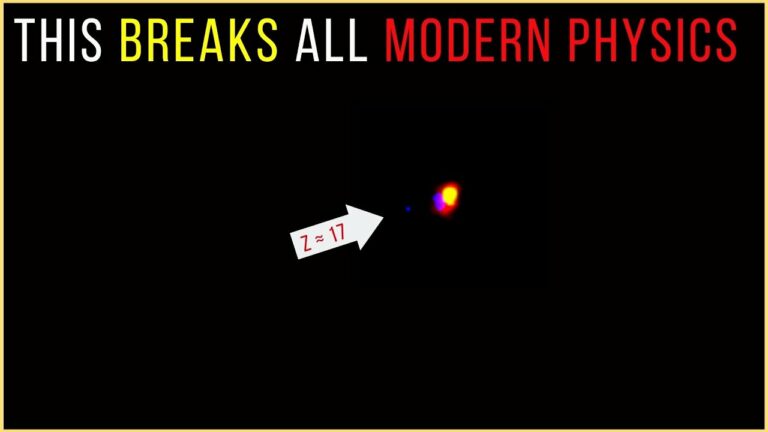BREAKING Laws of PHYSICS: JWST’s Confusing ‘Schrodinger’s Galaxy Candidate’ Baffles Scientists
Finding the oldest galaxies will help us further our investigation of the universe in both space and time.
This is one of the primary goals of the JWST. Astronomers have used the space telescope’s output to reveal a galaxy that is older than any we have ever seen, and may have even broken that record twice, in the short weeks after the first data release from the telescope.
Even if the record for the oldest and farthest galaxy has already been beaten three times, the scenario with this “Schrödinger’s galaxy candidate” is far less certain. This preprint examines the case of CEERS-1749 in a study that hasn’t yet undergone peer review.
On one scale, this galaxy is being observed as it was around 220 million years after the Big Bang.
If so, it would not only easily surpass the previous record for the furthest galaxy, but it would also disprove practically every theory of early galaxy evolution ever discovered.
This evolution of galaxies shouldn’t have evolved galaxies that quickly. On the other side, other calculations bring CEERS-1749 so much closer to Earth that it would be extraordinary in a whole other sense.
The most crucial measurement for understanding the early universe is z, or redshift. In the same way that sirens sound louder as they pass us, this measures how quickly an object is traveling away from us by shifting spectral lines towards the lower end of the spectrum.
Because of the universe’s expansion, a galaxy or star’s redshift indicates how far away it is from us and how far in the past it is that we are viewing it. Prior to this year, z=11 held the record for the highest redshift galaxy that we have observed.
A z=13 galaxy was reported by a team lead by Dr. Rohan Naidu of the Harvard and Smithsonian Center for Astrophysics shortly after the initial JWST release.
This galaxy was later topped by a candidate at z=14.
While values around 8 were discussed in a recent research investigating the furthest galaxies accessible enough to assess their metal composition.
Therefore, it is a very significant development indeed if the 0.6 to 5 Micrometers photometry determination of CERES-1749 as having a redshift of z17 is accurate.
CEERS-1749 has three putative neighbors with z5 (12.5 billion years old). It’s possible that it truly belongs to the same cluster as this group, and that the apparent redshift of more than three times larger is only a miscalculation.
Since CERES-1749 is both the oldest known galaxy and one that is billions of years younger, Naidu and his co-authors have dubbed it the “Shrödinger’s galaxy contender” due to this uncertainty.
Even if CEERS-1749 is a member of the z=5 cluster, it could still break several records.
It must either be a galaxy where star formation began and then largely stopped, or a smaller one that is extremely dense in dust, for it to look as it does at a z=5 distance (a preprint by another team also proposes the small and dusty scenario).
In certain circumstances, according to Naidu and co-authors, “it will be the highest-redshift quiescent galaxy, or one of the lowest mass dusty galaxies of the early Universe discovered to far.”
Both, while less severely, would also cast doubt on the galactic evolution models that are now in use.
Do not forget to share your opinion with us to provide you with the best posts !




0 Comments